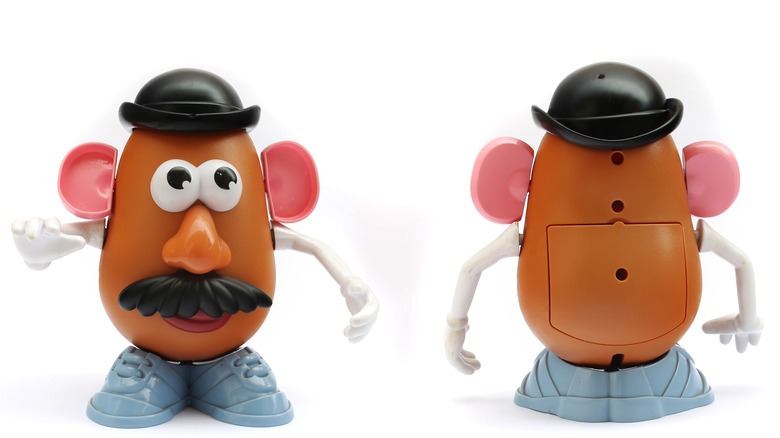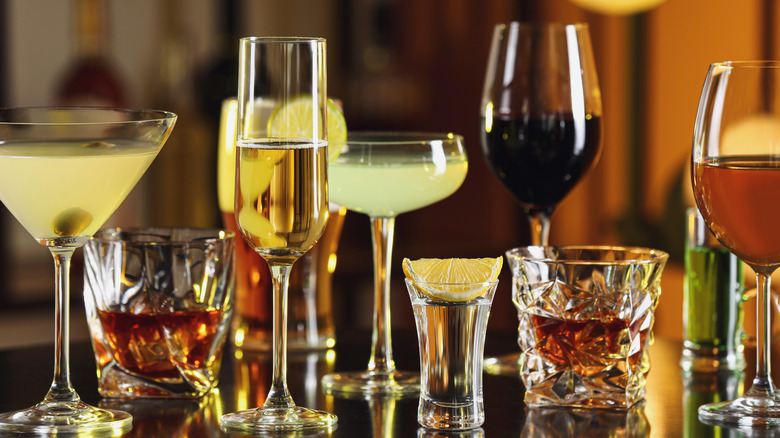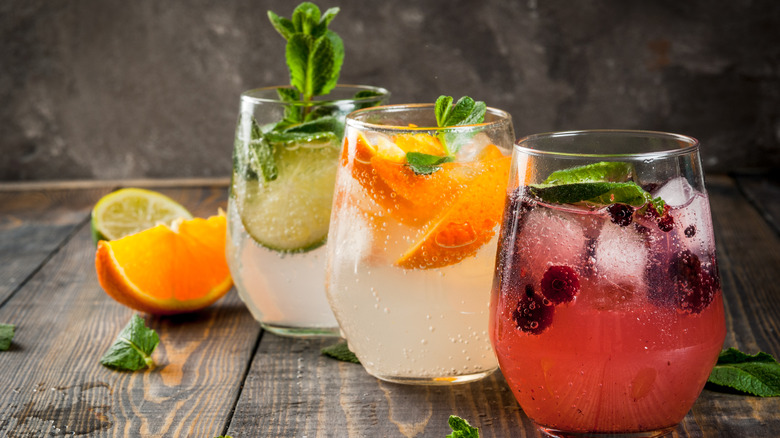What It Means To 'Mr. Potato Head' A Cocktail
Real-deal mixologists can seem like wizards, building cocktails with layers of complex and complementary flavors, satisfying textures, and innovative presentation. And while you might visit great bars and restaurants to sample the best cocktails you can find in order to mix them up on your own, there are some cocktails featuring ingredients or displays of skill like molecular gastronomy that you know you'll never be able to replicate at home. That said, there's so much you can learn by practicing your cocktail game with your own carefully selected ingredients.
Putting together your home bar can take a little time and is a bit of an investment, though. Even if you start with the basics, you're still looking at at least a dozen bottles, and it can take some time and sampling to determine which bourbon and which rum, for example, you want to be your house pour. And don't forget, you'll need at least a few tools as well. While you may choose to forgo a specialized bar spoon, at the very least you will need a cocktail shaker if you plan to have any kind of home mixology game. All the spirits, mixers, and tools can add up in terms of expense, and even a well-stocked bar won't have every new ingredient in every flavor variation. Enter Mr. Potato Head.
What does a toy have to do with creating cocktails?
First and foremost, when you Mr. Potato Head a cocktail, it doesn't involve adding spuds to your drink. Mr. Potato Head, the toy conceived by creator George Lerner in 1949, according to Thought Co, includes a bunch of plastic body parts that can interchangeably be stuck into a vaguely potato-shaped body to create a silly look. Expert bartender, Phil Ward told Australian Bartender how this Mr. Potato Head approach works for cocktails, saying, "My theory is that every template of a good drink is a blueprint for other good drinks so you just take it apart and put it back together."
Keep Calm and Cocktail explains the Mr. Potato Head approach can work in a couple of ways, first by swapping out one brand of spirit for another. If you don't have Grey Goose on hand, you can swap out any unflavored vodka and achieve much the same results. But you can also swap out spirits or ingredients with similar flavor profiles, like switching triple sec for Gran Marnier. While your finished cocktail won't always taste exactly like the original, you may discover you've created a variation you like even better.
Next level Mr. Potato Head
Probably the most fun way to Mr. Potato Head a cocktail is to take a drink like a whiskey sour, which calls for whiskey, lemon juice, and simple syrup, and swap the whiskey for another type of spirit altogether. Adding gin, for example, would give you bright botanicals in place of the spicy, woody whiskey. Tequila would give you a peppery kick that's much less mellow. Swapping one ingredient in a classic cocktail — giving it the Mr. Potato Head treatment — lets you both work with the spirits you have on hand and also play with ingredients to find interesting combinations, much like putting Mr. Potato Head's nose where his eyes should be. Phil Ward explained to the Australian Bartender that this is how he created his Oaxacan Old Fashioned, for example, by swapping out tequila and mezcal for whiskey.
Keep Calm and Cocktail does caution readers that Mr. Potato Head results may vary, but altering just one ingredient from a classic cocktail gives a novice cocktail maker a framework, meaning that the finished product is more likely to be palatable than one made by starting from scratch. And you're not limited to swapping just the spirits in your cocktail. Epicurious suggests tweaking a whiskey sour by trading plain simple syrup for flavored syrup to create a raspberry variation on the classic drink. Playing Mr. Potato Head with your home bar opens up all sorts of options and can even lead to your new house signature cocktail. No spuds needed.


